Charles Darwin
Map of the Second Voyage
of the HMS Beagle
Published by Rowman & Littlefield
An imprint of The Rowman & Littlefield Publishing Group, Inc.
4501 Forbes Boulevard, Suite 200, Lanham, Maryland 20706
www.rowman.com
Unit A, Whitacre Mews, 26-34 Stannary Street, London SE11 4AB
Copyright 2019 by J. David Archibald
All rights reserved. No part of this book may be reproduced in any form or by any electronic or mechanical means, including information storage and retrieval systems, without written permission from the publisher, except by a reviewer who may quote passages in a review.
British Library Cataloguing in Publication Information Available
Library of Congress Cataloging-in-Publication Data
Names: Archibald, J. David, author.
Title: Charles Darwin : a reference guide to his life and works / J. David Archibald.
Description: Lanham, MD : Rowman & Littlefield, [2019] | Series: Significant figures in world history | Includes bibliographical references and index.
Identifiers: LCCN 2018029809 (print) | LCCN 2018031505 (ebook) | ISBN 9781538111642 (electronic) | ISBN 9781538111635 (cloth : alk. paper)
Subjects: LCSH: Darwin, Charles, 18091882BiographyEncyclopedias. | Darwin, Charles, 18091882FamilyGenealogy. | NaturalistsGreat BritainBiographyEncyclopedias.
Classification: LCC QH31.D2 (ebook) | LCC QH31.D2 A788 2019 (print) | DDC 576.8/2092 [B]dc23
LC record available at https://lccn.loc.gov/2018029809
 The paper used in this publication meets the minimum requirements of American National Standard for Information SciencesPermanence of Paper for Printed Library Materials, ANSI/NISO Z39.48-1992.
The paper used in this publication meets the minimum requirements of American National Standard for Information SciencesPermanence of Paper for Printed Library Materials, ANSI/NISO Z39.48-1992.
Printed in the United States of America
Editors Foreword
Of all the famous persons in this series, few were as revolutionary as Charles Darwin. Yet he was hardly the ideal candidate for such a role. Relatively quiet and bookish, keeping within the usual boundaries of the time, he went on a trip that changed his life forever and also changed oursor at least most of ours. He discovered that man was not the be-all and end-all of creation but just another link in an infinitely long and still unfinished tree of life, himself evolving among the primates with no one knowing what would come next. Darwins seminal contribution, On the Origin of the Species, came in 1859 when he was already 50 years old. Even so, he studied and wrote on many more topics until his death in 1882. By then evolution was the accepted explanation for the origin of new species, even if not accepted by alland even today denied by some. So it is fitting to have Darwin among the first volumes in this series, as it paves the way for many others who, one way or the other, have changed our understanding of the world we live in.
Like the encyclopedias to follow, this one first provides a general overview of Darwins life in the chronology and expands upon it in a perceptive introduction, but the core of the book is the encyclopedic section, with entries in alphabetical order, on the man and the scientist, his books and other writings, crucial related concepts, and also his colleagues and rivals, to say nothing of a numerous family. In passing it helps to clear up many ideas that revolve around the man and his conclusions and have become part and parcel of modern thinking, such as the struggle for life, natural selection, and survival of the fittest. For, after having been knocked off their pedestal by Darwins work, humans need something to explain why we are still on top, at least for the time being. Of course, those who want to know moreand hopefully they are numerouscan check out the long and ample bibliography.
This volume was written by J. David Archibald, who received his PhD from the University of California, Berkeley, and has spent most of his career in the Department of Biology of San Diego State University (SDSU), where he is curator of mammals and professor emeritus of biology (Evolutionary Biology Program Area). Over the years, he has done and directed extensive field research in the American West and abroad, including 13 expeditions to Uzbekistan, Kazakhstan, and Pakistan, focused on Cretaceous vertebrate fossils. During this time, he has lectured regularly at SDSU and other places and written some 200 articles and reviews. On top of this, he has written or edited half a dozen books, with Origins of Darwins Evolution: Solving the Species Puzzle through Time and Place the most recent in 2017. We are certainly lucky that he was able to fit in this informative encyclopedia and are certain that readers will benefit greatly from consulting it.
Jon Woronoff
Series Editor
Preface
Discoveries are made in science; inventions and creations are made in engineering, art, humanities, religion, and other human endeavors. This makes science the only universal approach to understanding the world across all societies. Science is a human endeavor, but as a way of knowing, it is unique. Its only assumption is that the natural world can be understood through repeated cycles of hypothesizing, observing, experimenting. By this method, the evidence that accumulates helps form stronger and clearer theories about the workings of the natural world. These theories are not truths in the sense many people use the word, but the repeated testing of these theories either makes them fail or they become so well corroborated that all new evidence only strengthens them to the point that we speak of them as facts or truths. As the astrophysicist Neil deGrasse Tyson observed, The good thing about science is that its true whether or not you believe in it.
Biological evolution is one of these scientific truthsa theory that is so well substantiated that it is now accepted as fact. No scientifically based evidence disputes evolution, yet today naysayers still exist within religious fundamentalism in all major religions or under the pseudoscientific guise of intelligent design. Unsurprisingly, none of these myriad and contradictory creation myths finds any basis in fact, and they are completely untestable, inventions of the human mind varying across the societies from which they sprang.
This is similar to the milieu into which Charles Robert Darwin was born more than 200 years ago. Yet as a young man Darwin witnessed the stirrings of the newly energized sciences of geology and biology that were placing humans in a newly realized place in nature. Even his paternal grandfather Erasmus Darwin wrote poetry and prose imbued with the message of evolutionary change, writing, would it be too bold to imagine, that all warm-blooded animals have arisen from one living filament (The Botanic Garden, part 2, canto 3, line 459). Charles Darwin certainly could not know of his future in expanding well beyond his grandfathers ideas, demonstrating that evolution occurred and is occurring and that the rightful place of humans is within the natural world. As a young man of just 16 years old, his father castigated him for caring for nothing but shooting, dogs, and rat-catching, and saying that he would be a disgrace to yourself and all your family (The Autobiography of Charles Darwin 18091882, ed. Nora Barlow [London: Collins, 1958]). Fortunately for us, a finally relenting father, a great mentor at Cambridge University, and the fortuitous opportunity to sail around the world in the pursuit of natures deepest mysteries thrust Darwin onto the stage of human history and great scientific achievement.


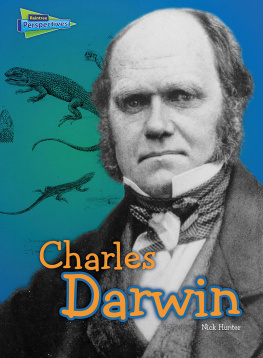
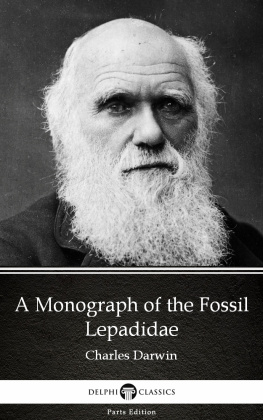

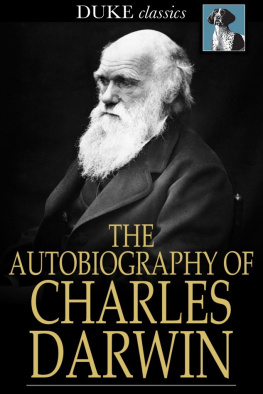
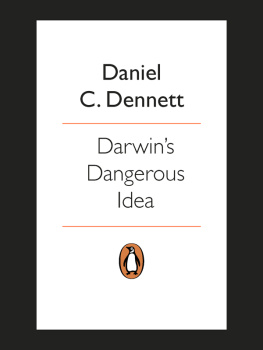
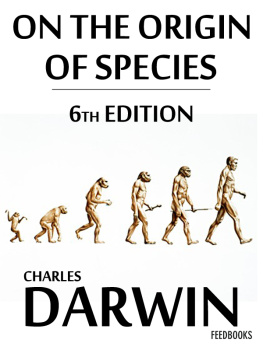
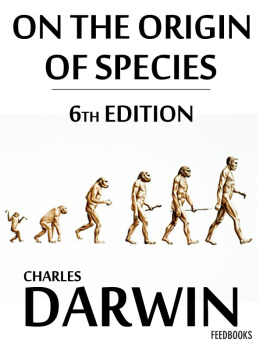


 The paper used in this publication meets the minimum requirements of American National Standard for Information SciencesPermanence of Paper for Printed Library Materials, ANSI/NISO Z39.48-1992.
The paper used in this publication meets the minimum requirements of American National Standard for Information SciencesPermanence of Paper for Printed Library Materials, ANSI/NISO Z39.48-1992.